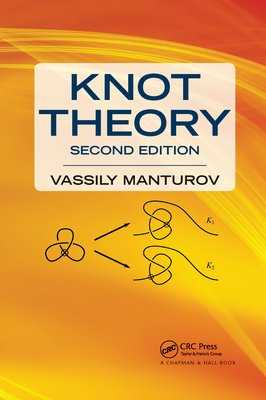商品描述
According to string theory, our universe exists in a 10- or 11-dimensional space. However, the idea the space beyond 3 dimensions seems hard to grasp for beginners. This book presents a way to understand four-dimensional space and beyond: with knots! Beginners can see high dimensional space although they have not seen it.With visual illustrations, we present the manipulation of figures in high dimensional space, examples of which are high dimensional knots and n-spheres embedded in the (n+2)-sphere, and generalize results on relations between local moves and knot invariants into high dimensional space.Local moves on knots, circles embedded in the 3-space, are very important to research in knot theory. It is well known that crossing changes are connected with the Alexander polynomial, the Jones polynomial, HOMFLYPT polynomial, Khovanov homology, Floer homology, Khovanov homotopy type, etc. We show several results on relations between local moves on high dimensional knots and their invariants.The following related topics are also introduced: projections of knots, knot products, slice knots and slice links, an open question: can the Jones polynomial be defined for links in all 3-manifolds? and Khovanov-Lipshitz-Sarkar stable homotopy type. Slice knots exist in the 3-space but are much related to the 4-dimensional space. The slice problem is connected with many exciting topics: Khovanov homology, Khovanv-Lipshits-Sarkar stable homotopy type, gauge theory, Floer homology, etc. Among them, the Khovanov-Lipshitz-Sarkar stable homotopy type is one of the exciting new areas; it is defined for links in the 3-sphere, but it is a high dimensional CW complex in general.Much of the book will be accessible to freshmen and sophomores with some basic knowledge of topology.
商品描述(中文翻譯)
根據弦理論,我們的宇宙存在於十維或十一維的空間中。然而,對於初學者來說,超越三維的空間概念似乎難以理解。本書提供了一種理解四維空間及更高維度的方法:透過結!初學者可以看到高維空間,儘管他們未曾見過。透過視覺插圖,我們展示了在高維空間中對圖形的操作,其中的例子包括高維結和嵌入在(n+2)-球體中的n-球體,並將有關局部移動與結不變量之間的關係推廣到高維空間。結的局部移動,即嵌入在三維空間中的圓圈,對於結理論的研究非常重要。眾所周知,交叉變化與亞歷山大多項式(Alexander polynomial)、瓊斯多項式(Jones polynomial)、HOMFLYPT多項式、霍瓦諾夫同調(Khovanov homology)、弗洛爾同調(Floer homology)、霍瓦諾夫同倫類型(Khovanov homotopy type)等有關。我們展示了高維結的局部移動與其不變量之間的幾個關係結果。以下相關主題也被介紹:結的投影、結的乘積、切片結(slice knots)和切片鏈(slice links)、一個未解的問題:瓊斯多項式是否可以為所有三維流形中的鏈定義?以及霍瓦諾夫-利普希茨-薩卡爾穩定同倫類型(Khovanov-Lipshitz-Sarkar stable homotopy type)。切片結存在於三維空間中,但與四維空間有很大關聯。切片問題與許多令人興奮的主題有關:霍瓦諾夫同調、霍瓦諾夫-利普希茨-薩卡爾穩定同倫類型、規範理論(gauge theory)、弗洛爾同調等。在這些主題中,霍瓦諾夫-利普希茨-薩卡爾穩定同倫類型是其中一個令人興奮的新領域;它是為三維球體中的鏈定義的,但一般來說它是一個高維的CW複形。本書的大部分內容將對具有一些基本拓撲知識的本科新生和二年級學生是可理解的。












